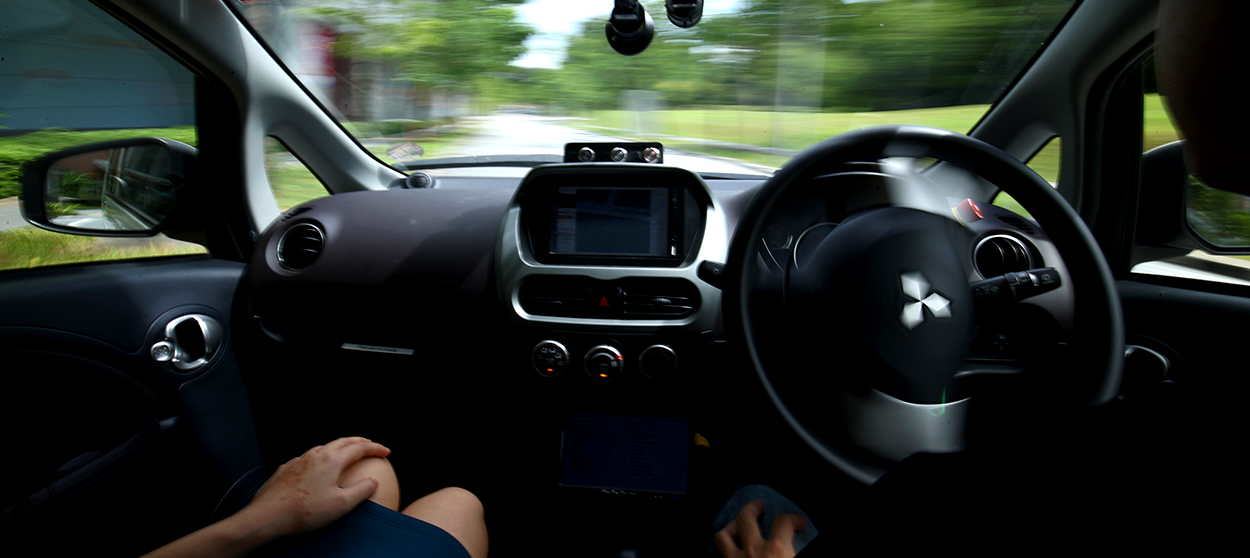When will self-driving cars take over?
The driverless-car revolution is way behind schedule. Is it still just a matter of time?

The driverless-car revolution is way behind schedule. Is it still just a matter of time? Here's everything you need to know:
What's gone wrong?
Carmakers have been claiming that autonomous vehicles, or AVs, will start filling the roads by 2020 and take over by 2030. Instead, AVs are pumping the brakes, as their futuristic technology has faltered in the unpredictable chaos of real-world roads. The rollout of General Motors' self-driving car subsidiary, Cruise Automation, is years behind schedule, and prototypes by Ford, Tesla, and the Google affiliate Waymo would still flunk driver's ed. AVs sometimes react to parked cars as if they're moving, and they get overwhelmed passing through construction zones. They're shaky at challenging maneuvers like turning left against oncoming traffic. Americans remain deeply skeptical about their safety. In March, an Uber-owned AV going 40 mph in Tempe, Arizona, fatally struck a 49-year-old pedestrian crossing the street in the dark when the vehicle's perception system got confused by the bicycle she was wheeling. Uber suspended testing nationwide. General Motors President Dan Ammann calls developing AVs that can navigate through urban traffic "the engineering challenge of our generation." Klaus Fröhlich, BMW's head of research and development, puts it more candidly: "Everyone in the industry is becoming more and more nervous that they will waste billions of dollars."
The Week
Escape your echo chamber. Get the facts behind the news, plus analysis from multiple perspectives.

Sign up for The Week's Free Newsletters
From our morning news briefing to a weekly Good News Newsletter, get the best of The Week delivered directly to your inbox.
From our morning news briefing to a weekly Good News Newsletter, get the best of The Week delivered directly to your inbox.
What are the design obstacles?
Most AV developers, including Uber and Waymo, equip their cars with lidar — "light detection and ranging" sensors that use rapid light pulses to map a vehicle's surroundings in 360 degrees. Many AVs are also equipped with cameras, radar, and GPS antennas to take in information. But even the most advanced technology has performed inconsistently on the road. Lidar falters in heavy rain and snow, and it struggles to detect the little plastic bumps that are sometimes used to divide lanes in California and other states. "We're not even remotely close to being able to be truly autonomous in diverse conditions," said Austin Russell, CEO of lidar manufacturer Luminar. Motorists rely on human cues that technology cannot detect: the gestures of a traffic cop, or eye contact with a pedestrian or another driver that can help us predict their behavior. Engineers, however, believe AVs can use their experience on the road to refine their programming through machine learning.
How's testing going?
Reasonably well, when roads are not too congested. There have been more than 100 accidents involving AVs, though most were minor and caused by other cars or pedestrians. Waymo has tested about 600 cars in 25 cities and has run computer simulations for 7 billion miles of driving. A lot of AV testing occurs around Silicon Valley. In the Phoenix area, where wide, flat roads invite testing, Waymo gives rides to about 400 households through an app. Washington, D.C., will allow AVs early next year, as long as each has a safety driver and a secondary engineer. Arlington, Texas, installed driverless shuttles on closed roads, mostly to transport people between parking lots and sports stadiums, and the roughly 1,500 rides to date have been successful. Yet a nationwide AV rollout would require consistent regulations; for now, rules vary from state to state.
A free daily email with the biggest news stories of the day – and the best features from TheWeek.com
Can AVs ever be safe?
Developers think AVs are certain to be dramatically safer than human-operated cars — computers, after all, don't drive drunk, distract themselves by texting, or succumb to road rage. There were more than 40,000 traffic-related deaths in the U.S. in 2017, and researchers say 94 percent of car accidents are caused by human error. Yet surveys consistently find that only about a quarter of Americans would feel safe riding without a driver. Beyond tech challenges, programmers must confront many ethical problems: Should a car whose brakes fail crash into five people in a crosswalk or veer off the road and hit one person on the sidewalk instead? Should the car stop short for an animal in the road, even if doing so would endanger humans in that vehicle and in other cars? "Before we allow our cars to make ethical decisions," MIT researchers recently concluded, "we need to have a global conversation to express our preferences to the companies that will design moral algorithms."
Will AVs ever rule the road?
Despite the setbacks, carmakers continue to set ambitious goals, and they predict that the mass introduction of AVs will be as transformative as the introduction of the automobile itself. But even if design flaws are fixed, there will still be countless issues to address. Car insurance will need to be entirely reworked. Traffic laws will also require an overhaul. It's unclear whether the ubiquity of AVs would lead to a surge in cars on the road, which could be a pollution disaster. And computerizing transportation invites all sorts of cybersecurity dangers, as a car's controls could be hacked and its movements easily monitored. But the greatest obstacle of all, engineers agree, is the fear people will have of trusting a robot to drive through traffic. Andrew Moore, the head of computer science at Carnegie Mellon University, says the self-driving car will not become popular "until there's proof that it's much safer, like a factor of 100 safer, than having a human drive."
The impact on truckers and taxis
Nearly 2 million Americans drive heavy trucks for a living, and another 1.7 million drive buses, taxis, and delivery vehicles. Driverless cars could put all of those people out of work. Developers of AVs insist, however, that humans would still be needed in these driving professions. Uber, which predicts that between 500,000 and 1.5 million self-driving trucks could be on the road by 2028, says autonomous trucks would almost certainly need human drivers onboard. If those trucks are more efficient, Uber argues, it will reduce costs, increase demand, and lead to more business for trucking companies and their customers. Others aren't convinced; a University of California, Berkeley, study predicts nearly 300,000 U.S. truckers will lose their jobs over the next 25 years to autonomous rigs. Livery drivers will also lose jobs when Uber and Lyft can rely on driverless fleets. Many other professions, from driving instructors to drive-through attendants, would also face massive disruption.
-
 The rise of the spymaster: a ‘tectonic shift’ in Ukraine’s politics
The rise of the spymaster: a ‘tectonic shift’ in Ukraine’s politicsIn the Spotlight President Zelenskyy’s new chief of staff, former head of military intelligence Kyrylo Budanov, is widely viewed as a potential successor
-
 How oil tankers have been weaponised
How oil tankers have been weaponisedThe Explainer The seizure of a Russian tanker in the Atlantic last week has drawn attention to the country’s clandestine shipping network
-
 5 critical cartoons about the deadly crackdown on protesters in Iran
5 critical cartoons about the deadly crackdown on protesters in IranCartoons Artists take on twinning, booed off stage, and more
-
 How do you solve a problem like Facebook?
How do you solve a problem like Facebook?The Explainer The social media giant is under intense scrutiny. But can it be reined in?
-
 Microsoft's big bid for Gen Z
Microsoft's big bid for Gen ZThe Explainer Why the software giant wants to buy TikTok
-
 Apple is about to start making laptops a lot more like phones
Apple is about to start making laptops a lot more like phonesThe Explainer A whole new era in the world of Mac
-
Why are calendar apps so awful?
The Explainer Honestly it's a wonder we manage to schedule anything at all
-
 Tesla's stock price has skyrocketed. Is there a catch?
Tesla's stock price has skyrocketed. Is there a catch?The Explainer The oddball story behind the electric car company's rapid turnaround
-
 How robocalls became America's most prevalent crime
How robocalls became America's most prevalent crimeThe Explainer Today, half of all phone calls are automated scams. Here's everything you need to know.
-
 Google's uncertain future
Google's uncertain futureThe Explainer As Larry Page and Sergey Brin officially step down, the company is at a crossroads
-
 Can Apple make VR mainstream?
Can Apple make VR mainstream?The Explainer What to think of the company's foray into augmented reality